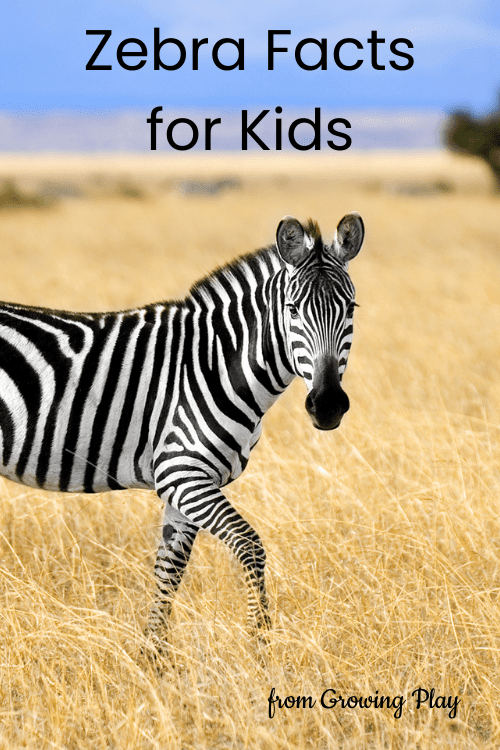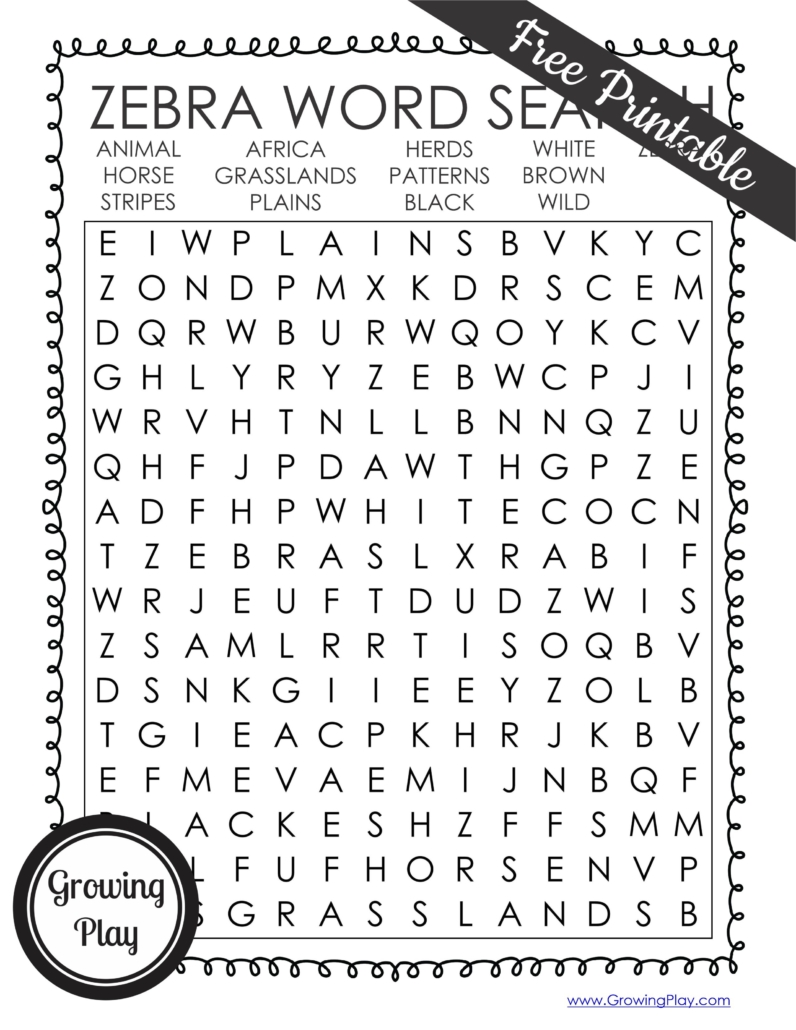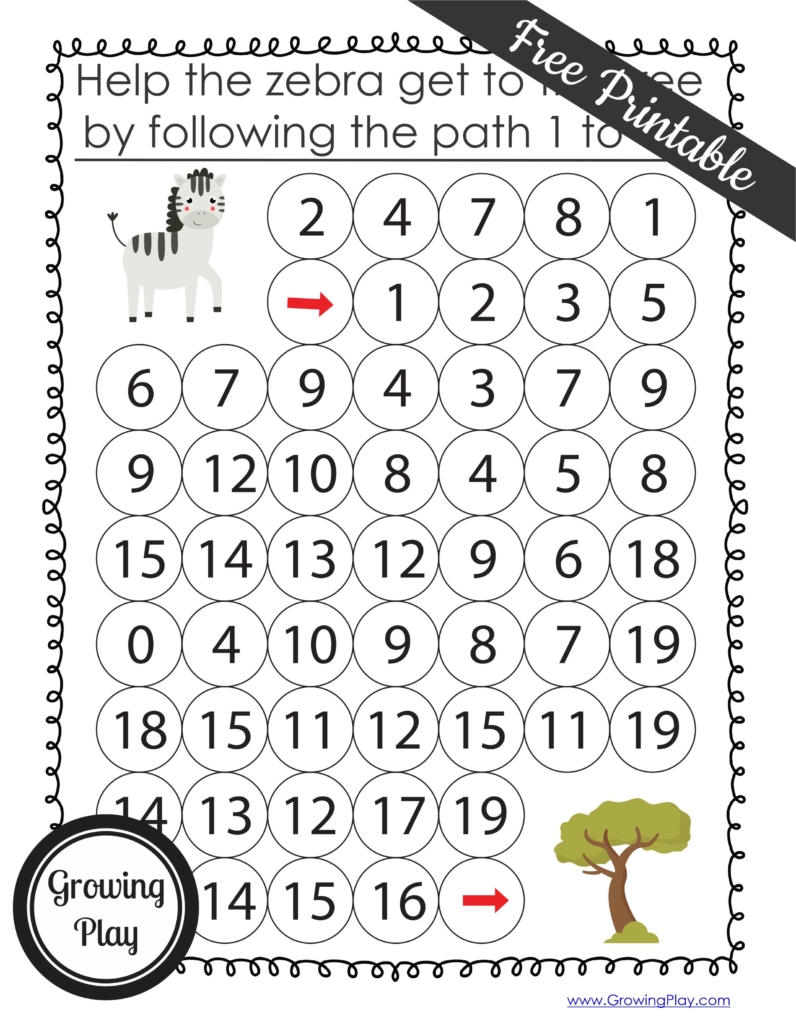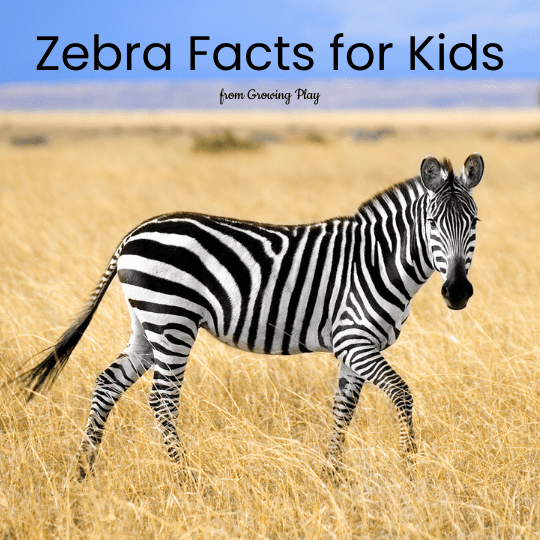Zebra Facts for Kids

Are zebras black with white stripes or white with black stripes? Their stripes can actually be white, black, or even brown! When it is first born, a baby zebra will have brown stripes and the rate at which they darken and become black depends on the species of zebra. There are three main species of zebras, each one with unique characteristics and appearances. In fact, each zebra has their own unique stripe pattern, so no two zebras are the same. How cool is that? If that fascinates you, keep reading to learn even more about these incredible animals. We will cover it all from zebra stripes to zebra diets and other characteristics of zebras, including their facial expressions. You heard that right! Zebras are known for being very expressive animals and even share some similarities with humans. Learn all about that and more with these 25 zebra facts for kids.
BONUS: Download a FREE Zebra Word Search Puzzle and Zebra Maze at the bottom of this blog post.

What are Zebras?
1. Zebras are wild animals and members of the horse family. Like horses, zebras are herbivores meaning their diet consists mainly of grasses and shrubs.
2. Zebras have short hair and long tails. Their entire body is striped, although they have a white belly.
Where are Zebras?
3. Zebras are native to Eastern Africa although they can be found along the whole continent. Some of the most common countries where you can find zebras include Kenya, Tanzania, Uganda, and South Africa. Are there zebras near where you live?
4.They live in open grasslands or along African plains, where there is plenty of grass for them to eat. Some zebras live in zoos or wildlife sanctuaries, though, where they can be protected from predators. Have you ever seen a zebra in a zoo?
Pixel Art Color By Number – Animal Edition
Zebra Facts for Kids – Different Species of Zebra
5. There are many different zebra species although the three main species of zebra include the Plains zebra, the Grevy’s zebra, and the Mountain zebra.
6. The Plains zebra is the most common zebra species with about 200,000 individual zebras surviving today. This is one the larger groups of zebras compared to Grevy’s zebras, which is estimated to have less than 2,000 mature individuals.
7. The Grevy’s zebra is the largest zebra species and can weigh up to 1,000 pounds. Wow, that’s one big zebra!
8. The Mountain zebra is the smallest zebra species and weighs between 400 and 600 pounds.
Zebra Stripes
9. At birth, zebras have brown and white stripes, but their stripes darken as they mature. These dark stripes appear black for many zebra species.
10. Adult zebras have black and white stripes that help to camouflage them from predators such as lions and hyenas.
11. The stripes on a zebra’s coat are unique to each individual zebra, much like human fingerprints.
Zebra Facts for Kids – Characteristics of Zebras
12. Zebras have excellent eyesight and hearing, which helps them to detect predators from a distance.
13. Zebras are able to communicate with each other through vocalizations and body language. Opening their eyes wide and baring their teeth is actually a form of communication for the species. How cool is that?
14. Zebras are able to reach speeds of up to 40 miles per hour when running from predators. They also use their hind legs to perform powerful kicks when trying to protect themselves from predators.
Herds of Zebras
15. Zebras are social animals and live in herds of up to 500 individuals. Within these large herds, a zebra may form a special bond with other zebras and they will stay together for life.
16. When threatened by a predator, zebras will band together and form a defensive circle around the young or weaker members of the herd. The zebra’s main predators are lions, hyenas, leopards, and the African wild dog. Which predator would you be most afraid of?

Mysteries of the World Word Search Puzzlers Packet
Zebra Facts for Kids – The Male Stallion and Female Mare
17. Male zebras are called stallions, while female zebras are called mares.
18. Young zebras are called foals. A young zebra or foal weighs between 50 and 80 pounds although at birth, they typically do not weigh more than 60 pounds. That’s still a lot larger than human babies, though!
More About Foals and the Birthing of Zebras
19. Zebras reach sexual maturity at around two years of age.
20. Mares usually give birth to one foal at a time, although they may occasionally have twins.
21. The gestation period for a zebra is around 12 to 13 months. That means zebras are pregnant for about a year before giving birth.
22. Foals are able to stand and walk soon after they are born and are fully independent by around six months of age.

Zebra Facts for Kids – The Lifespan and Population of Zebras
23. Zebras typically live for around 20 years in the wild, although some individuals have been known to reach ages of up to 30 years old.
24. Zebras are listed as near threatened by the International Union for Conservation of Nature (IUCN).
25. The main threats to zebra populations are habitat loss, hunting, and disease.
If we do not actively work to protect zebra habitats, their populations will continue to decline and we may begin to see them on the endangered species list. To prevent this, it is important we preserve national parks and denounce zebra hunting. Zebras are an important part of Africa’s ecosystems and play a role in dispersing seeds and controlling grazing habits, which is why it is integral we work to protect these fascinating creatures.
WANT MORE FUN FACTS FOR KIDS?
Check out these fun facts for kids here and browse all the other topics at the bottom of the post.
DOWNLOAD MY FREE ZEBRA FACTS FOR KIDS ACTIVITY PACK
Sign up to receive the Growing Play email newsletter. If you already subscribe enter your email below – you will not be subscribed twice.



